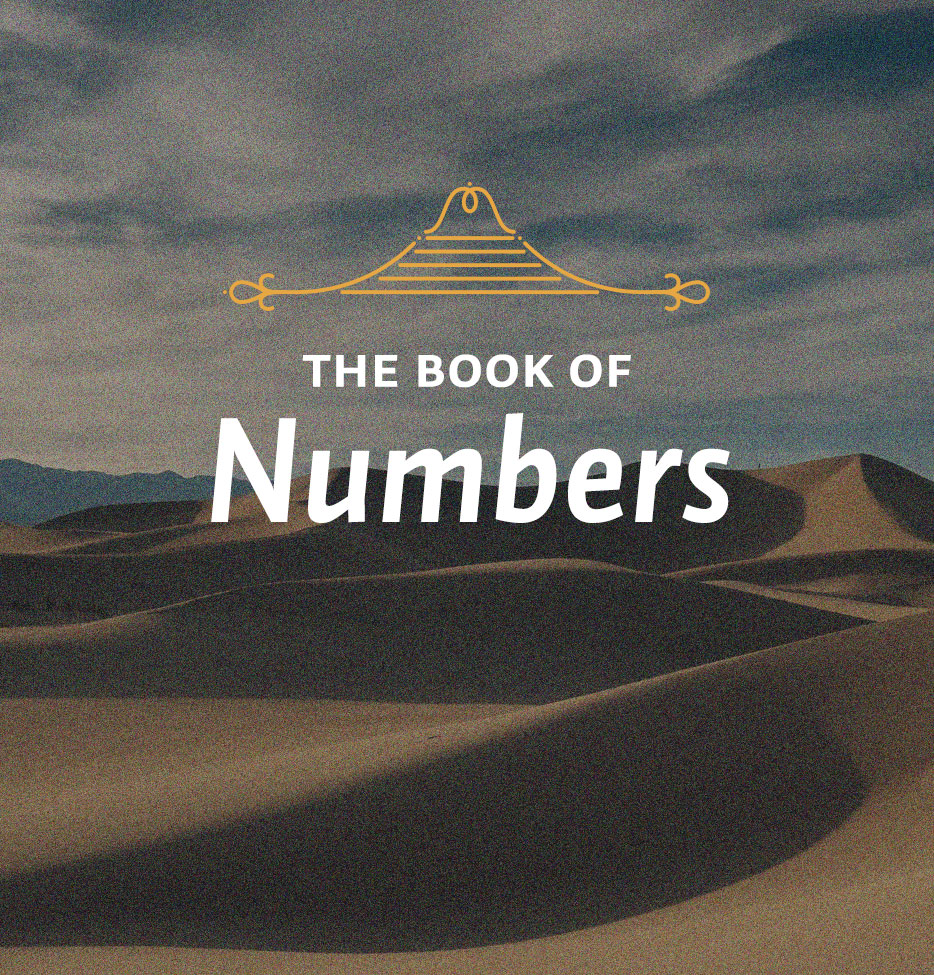Notice that all of the fighting men were counted. Every one of them was important. That’s true today in the church as well. The Bible says in several places that God has a scroll in which our names are written (for example, Ps. 139:16; Rev. 20:12). Every one of us is important. Although we don’t have a census on earth in the church that corresponds with the very literal census of Israel, there is a heavenly census that is far more important.
The second thing to notice is that it was the fighting men who were counted. In other words, they were being numbered for battle, and there were battles to be fought. That’s exactly the case today. Paul writes in Ephesians 6 that we are in a great battle, but it isn’t against flesh and blood. You and I aren’t going around hitting people with swords or shooting them with guns because we fight a spiritual battle, which is against the powers in the heavenly places—the spiritual forces that stand behind the evil of this world. If we are fighting, we have to be trained and armed, and we need to be armed with those weapons and armor that have been provided by God. Paul spells this out in Ephesians 6:14-18 (see also 2 Cor. 10:4). If God was so serious about Israel’s earthly battles that He numbered the people and records that as a portion of the Word of God, we should be serious about the fact that every one of us is called to fight spiritual battles.
How many tribes of Israel were there? We all know the answer to that: twelve, of course! But this is actually incorrect. There were thirteen tribes. How can that be? Joseph is one of the twelve sons of his father, but you don’t have a tribe of Joseph. That would bring the number of tribes down to eleven. But Joseph had two sons, Ephraim and Manasseh, and each of those sons became the father of a tribe, which makes thirteen. However, when Numbers 2 describes the arranging of these tribes around the camp, there are twelve.
You might be saying to yourself, “I thought I just learned something I didn’t know before—that there were thirteen tribes. Now I find out there are only twelve. How can that be?” The answer is that the tribe of Levi had a special position that didn’t quite fit with the rest. The tribe of Levi was the tribe of the priests and their helpers, and their position was around the Tent of Meeting, the tabernacle at the very center of the camp. So when the description is given here for the layout of the various tribes, we’re told that three of them were to the north, three of them to the east, three of them to the west, and three of them to the south. Those are the twelve tribes, but Levi is not included in this list.
Their camp was in the form of a square, with the tabernacle in the middle for the dwelling place of God. When the march set out, six of the tribes went first, with Judah, the largest tribe of all, leading the way. After these came the tabernacle, carried by the Levites, and after that the final six tribes. And when they went into battle, the ark and the cloud went before them.
Numbers 2 is all about God’s being in the very midst of His people. Do we experience any less of God’s presence? Of course not! We have with us the very presence of God the Holy Spirit. Where two or three of us are gathered together in God’s name, Jesus Christ is present in the power of His Spirit. He is present when we meet together, when the Word is preached, when we testify about His grace. The Israelites had God’s presence in a visible way. They could look up and see the cloud, and they could look back and see the tabernacle in their midst. We can’t see the Holy Spirit, but He is there. We have to recognize that this arrangement of the people in the book of Numbers is a visual manifestation of what has become for us a spiritual reality.
There must have been something particularly beautiful about this arrangement. When every tribe, each one being important and each one in its place, the people must have looked at that with rejoicing. Even the pagans said this. Later, when Balaam the pagan prophet looked down from the mountains on the tribes of Israel all arranged around the ark of the covenant and the tabernacle, he said, “How beautiful are your tents, O Jacob, your dwelling places, O Israel!” (Num. 24:5). As you read these chapters, you have to begin to get a feel for what it really must have been like for this ancient people to experience God in their midst.
The census of the Levites recorded in chapters 3 and 4 is a little bit different from the census in chapter 1. For one thing, there are two listings of the Levites. In chapter 3 there’s a census of every male from the age of one month upward, for a total of twenty-two thousand. In chapter 4:34-39, there is a listing of those who were of the right age to serve in the Tent of Meeting, which was 8,580.
There are a couple of interesting things about this first listing. First, the census in chapter 1 was a numbering of the fighting men. The Levites weren’t counted in that because the Levites didn’t fight. They were there to protect and carry the ark of the covenant. Women weren’t counted because they didn’t fight, either. But when the Levites are counted, they were numbered from a very early age of one month and upward.






